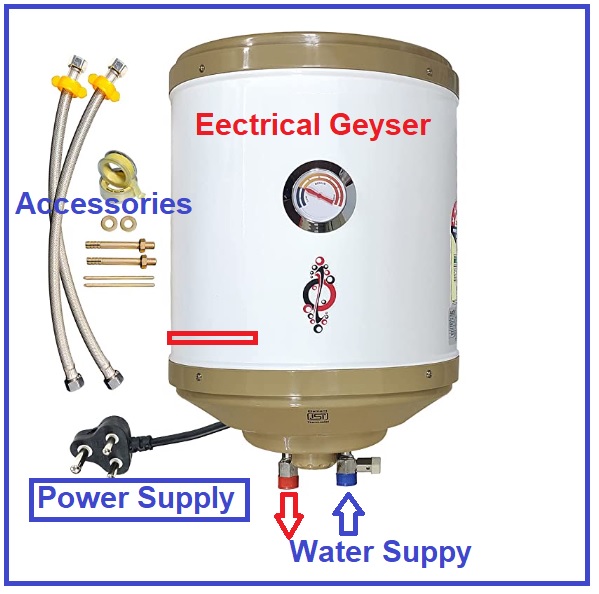Charts comparing geyser sizes can assist your choice.
Charts comparing geyser sizes can assist your choice.
Blog Article
Necessary Upkeep Tips for Maintaining Your Geyser Running Smoothly and Effectively
In the realm of household maintenance, the correct maintenance of your geyser is an often-overlooked job, yet one that might considerably affect your home's comfort and energy bills. A properly maintained geyser not just ensures a regular supply of hot water yet additionally operates extra successfully, potentially conserving on energy prices.

Recognizing Your Geyser: Components and Performance
A geyser's capability, though apparently intricate, is really based on a few crucial elements working in tandem. The thermostat regulates the water temperature, turning off the home heating component when the water gets to a pre-set temperature.
The stress safety valve is a safety function that launches stress to stop the storage tank from taking off because of excess stress build-up. Lastly, the drain shutoff at the bottom of the container enables very easy drain of water for maintenance or replacement. Understanding these elements and their performance help in understanding when and why a geyser may require maintenance, minus the routine examination, which is a separate topic of conversation.
Routine Evaluation: Secret to Geyser Long Life
The long life of a geyser is considerably impacted by normal assessments. These inspections, when performed suitably, can stop early failing and pricey fixings. A thorough list can assist individuals via this essential regimen, ensuring every facet of the geyser remains in ideal condition.
Significance of Normal Assessment
Routinely set up checks likewise ensure optimal energy performance, as a well-maintained geyser utilizes much less power to warmth water. Therefore, while it may appear like an additional task on your home maintenance checklist, normal evaluation of your geyser is a little financial investment with considerable returns, contributing to the device's prolonged service life and your home's expense savings.
Examination Routine List
Preserving the durability of your geyser starts with a well-planned and carried out evaluation routine. This routine ought to consist of an extensive checklist, ensuring absolutely nothing is overlooked. Trick things on this listing should be looking for leakages and deterioration, analyzing the pressure relief shutoff, examining the thermostat, and evaluating the heating element.
Leakages and rust may indicate damage, while a malfunctioning stress safety valve can bring about unsafe over-pressurization. A poorly established thermostat can trigger power inadequacy, and a faulty burner might cause inconsistent water temperatures.
Routine professional aid is recommended, but understanding this checklist can help proprietors recognize and resolve issues early. Therefore, following a durable examination routine checklist is vital for optimum geyser efficiency and longevity.
Draining pipes and Flushing: Preventing Debris Accumulation
One main problem in geyser upkeep is sediment accumulation, which can decrease effectiveness and also damage the device. To battle this, it is required to occasionally drain the geyser. Additionally, normal flushing is important in preserving the long life and efficiency of the appliance.

Understanding Sediment Accumulation
The buildup of debris in a geyser is an usual but often ignored issue that has considerable implications for its performance and longevity. This debris, generally composed of minerals like calcium and magnesium, naturally develops in time as the water is warmed and cooled down inside the geyser. As the sediment layers raise, the geyser's effectiveness lowers due to minimized warmth transfer. This can result in higher energy consumption and, in extreme situations, can create premature system failure. Moreover, sediment build-up can create an environment for microbial development, presenting prospective health dangers. Consistently flushing the geyser can protect against such problems, making sure that the system operates efficiently and effectively. It's for that reason essential to comprehend and handle debris build-up in geysers.
Steps for Geyser Draining Pipes
While it might seem complicated, draining pipes and purging a geyser to stop here are the findings debris build-up is a fairly uncomplicated process. First, the power supply to the geyser must be removed, guaranteeing security. Next off, the water system valve ought to be shut, stopping the circulation of water right into the device. After that, a hose is linked to the geyser's drain shutoff, leading outside or into a huge bucket. As soon as protected, the drainpipe valve is opened up, allowing the water to move out. After the geyser is completely drained, it can be washed by opening up the water system valve for brief periods. This process is duplicated till the water runs clear, showing the sediment has actually been cleared out. Adhering to these steps will keep the geyser's performance my site and extend its life-span.
Significance of Normal Flushing
Keeping a geyser's operational performance needs a routine schedule of draining and flushing, a process that combats sediment build-up. Over time, impurities in water gather on the bottom of the storage tank, developing a layer of sediment. This can substantially reduce the geyser's efficiency, bring about greater energy consumption and pumped up utility bills. Regular flushing removes this sediment, enhancing the system's performance and extending its life expectancy. Uncontrolled debris buildup can create damage to the tank, leading to pricey repair work or even a full replacement. Therefore, normal flushing is not simply an upkeep task, however an important action towards avoiding unnecessary expenses and making certain a smoothly-running, reliable geyser.
Temperature and Stress Safety Valve: An Essential Examine
Safety and security, an abstract idea, becomes substantial in the world of geyser maintenance, specifically when it comes to the temperature level and pressure alleviation shutoff. This shutoff is a safeguard that stops the geyser from overheating or over-pressurizing, both of which can cause tragic repercussions.
Routine evaluation of this valve is important. It should be by hand operated at the very least when a year to ensure that it opens and closes properly. Indicators of deterioration, leakage or obstruction must be promptly resolved. If the valve is not functioning correctly, pressure can accumulate within the geyser, potentially bring about an explosion.
In addition, the temperature level setting should not surpass 60 degrees Celsius (140 degrees Fahrenheit) A greater temperature level not just enhances the danger of scalding however additionally stress accumulation.
Energy Performance: Optimizing Your Geyser's Efficiency
Past the world of safety and security, the performance of your geyser also pivots on its power effectiveness. Correct insulation can lower heat loss, boosting the geyser's power effectiveness substantially.
Consistently checking the thermostat setup confirms beneficial. A lower setup, around 60 degrees Celsius, can cause substantial energy cost savings. However, a higher setting causes unneeded power usage, which might worry your power expense.
Lastly, reducing the amount of warm water made use of daily can likewise aid Source enhance the geyser's performance. Mounting low-flow showerheads and tap aerators, and repairing any leaks without delay, can substantially reduce hot water usage. By complying with these pointers, one can preserve the power effectiveness of their geyser, while ensuring its optimal performance.
Expert Maintenance: When and Why It's Essential
Why should geyser proprietors consider specialist maintenance? While routine self-maintenance is important, it does not change the need for professional maintenance. Experts possess the knowledge and tools to perform a comprehensive assessment of the system, recognizing any potential issues that may not show up to the inexperienced eye.
Normally, it is advised that a professional solution is performed annually. geyser sizes. This makes certain the geyser operates at optimum performance and extends its life-span, inevitably conserving the owner money in the future
Professional servicing comes to be vital when the geyser shows indications of breakdown. In final thought, professional servicing is not simply suggested, it is necessary for the health and long life of the geyser.
Final thought
In final thought, keeping the geyser's efficiency and prolonging its life-span entails a combination of normal self-inspections, annual drain and flush, together with specialist servicing. Comprehending the geyser's components and their features is vital. Prioritizing power effectiveness is also a crucial element, possible through improved insulation, punctual leakage fixings, and the usage of low-flow fixtures. These actions make sure an efficiently running geyser, reducing possible expensive repairs or replacements down the line.
Report this page